As professional copywriting journalists, we understand the importance of staying up-to-date with emerging trends in the beauty industry. That’s why we’re excited to explore the art of powder cosmetics, from their rich history to their anticipated future developments. Powder cosmetics have been a beloved staple in makeup routines for centuries, and their enduring appeal and artistry continue to shape the beauty industry today.
Understanding the history of powder cosmetics is crucial for appreciating their impact on the beauty industry. From ancient Egypt to modern-day formulations, these versatile cosmetics have evolved over time, and their significance in different cultures cannot be overstated. But the art of powder cosmetics is not just about their history; it’s also about the future trends that will shape the next generation of powder makeup. In this article, we will delve into the techniques, ingredients, and innovations that will define the future of powder cosmetics.
Key Takeaways:
- Powder cosmetics have a rich history that spans ancient civilizations to modern-day formulations
- The art of powder cosmetics is not just about their history but also about future trends and innovations
- Understanding the science and formulation of powder cosmetics is crucial for appreciating their impact on the beauty industry
The Evolution of Powder Cosmetics: A Historical Perspective
Understanding the history of powder cosmetics is crucial to appreciating their lasting impact on the beauty industry. From ancient civilizations to contemporary society, powder makeup has undergone significant transformations, reflecting the changing attitudes towards beauty standards and cosmetic practices.
The earliest records of powder cosmetics date back to ancient Egypt, where both men and women used a mixture of lead, copper, and other minerals to decorate their faces. As cosmetic practices spread to other civilizations, such as Greece and Rome, mineral powders were replaced with ground herbs, rice, and talc. In the Middle Ages, white lead powder became a popular cosmetic for women in Europe, despite its toxic properties.
The 19th and 20th centuries marked a turning point in cosmetic history, with the rise of industrialization and mass production of beauty products. Companies such as Coty and Revlon launched innovative powder makeup formulations, including pressed powders and loose powders, which quickly gained popularity among women of all ages and backgrounds.
The Art of Powder Cosmetics in the Roaring Twenties
The 1920s witnessed a transformative period in the artistry of powder cosmetics, with the emergence of the flapper culture and the rise of Hollywood glamour. Women embraced bold, dramatic looks, characterized by dark smoky eyes, vibrant red lips, and porcelain skin. Powder makeup played a key role in creating these iconic styles, accentuating the contours of the face and adding a touch of sophistication and elegance to the overall appearance.
As cosmetic technology continued to advance, so did the range of colors, textures, and finishes available in powder makeup. The 1950s and 1960s saw the introduction of mineral-based powders, which offered a more natural look and were less likely to cause skin irritation. In the 1970s and 1980s, loose powders made a comeback, with brands such as Clinique and Estée Lauder offering translucent powders that gave a smooth, matte finish.
Today, powder cosmetics continue to be a staple in the beauty routines of millions of people around the world. From setting powders to highlighters, contour powders to blushes, the versatility and artistry of powder makeup show no signs of slowing down.
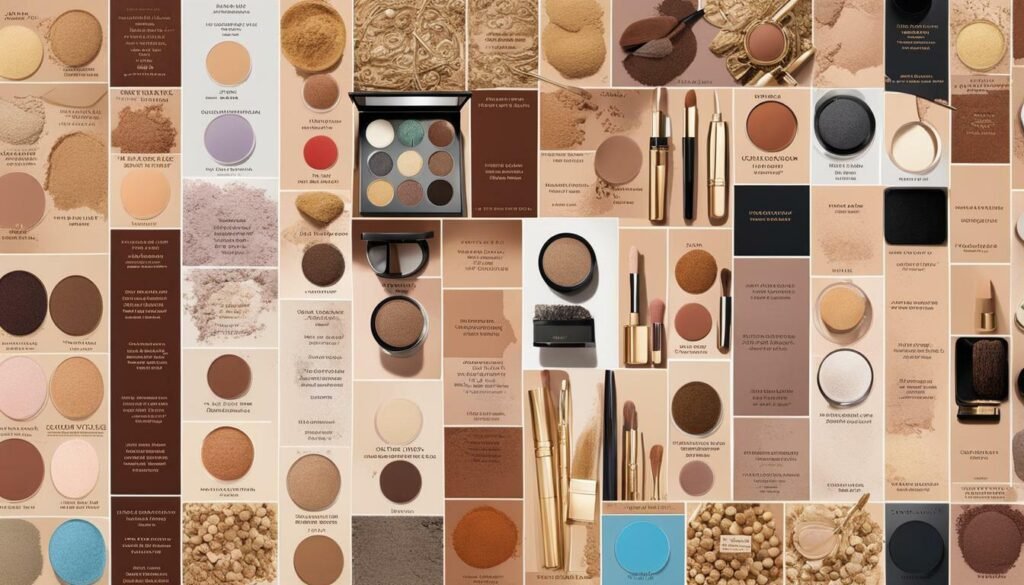
“The history of powder cosmetics is a testament to the enduring appeal and creativity of the beauty industry. As trends come and go, powder makeup remains a timeless art form that empowers individuals to express themselves and feel confident in their own skin.”
The Artistry Behind Powder Cosmetics: Techniques and Application
When it comes to powder makeup, there is a certain artistry and skill required to apply it effectively. Whether you are aiming for a natural, everyday look or something bold and dramatic, the techniques and application methods used can make all the difference. With powder cosmetics being a staple in the world of beauty, it is important to understand how to use them to achieve the desired effect.
One of the keys to successful powder makeup application is to start with a clean, moisturized canvas. This helps to ensure that the makeup goes on smoothly and evenly. Using a primer can also help to improve the longevity of the makeup, keeping it in place for longer periods of time. It is important to choose the right shade of powder for your skin tone to ensure a seamless blend between your face and neck.
When applying powder makeup, it is best to start with lighter layers and build up to the desired coverage. Using a brush or sponge, apply the powder in circular motions, blending outwards towards the hairline and jawline. This technique can help to create a more natural, airbrushed finish.
When it comes to specific techniques, there are several popular ones to choose from. For example, the “baking” technique involves applying a generous amount of loose powder under the eyes, allowing it to set for several minutes, and then dusting it away with a brush. This technique can help to prevent creasing and improve the longevity of concealer. Another popular technique is the “contour and highlight” method, which involves using different shades of powder to enhance and define the cheekbones, nose, and other facial features.
As with any aspect of the beauty industry, makeup trends are constantly evolving. One current trend with powder cosmetics is the use of “setting powders” to lock in makeup and prevent shine. These powders are typically translucent and can be applied all over the face. Another current trend is the use of “color correcting” powders, which help to neutralize and conceal different skin imperfections such as redness or sallowness.
Whatever your preferred technique, it is important to remember that powder makeup can take some practice to master. Experimenting with different tools and formulas can help to find what works best for you. And as with any art form, the beauty of powder cosmetics lies in the creativity and self-expression that it can inspire.
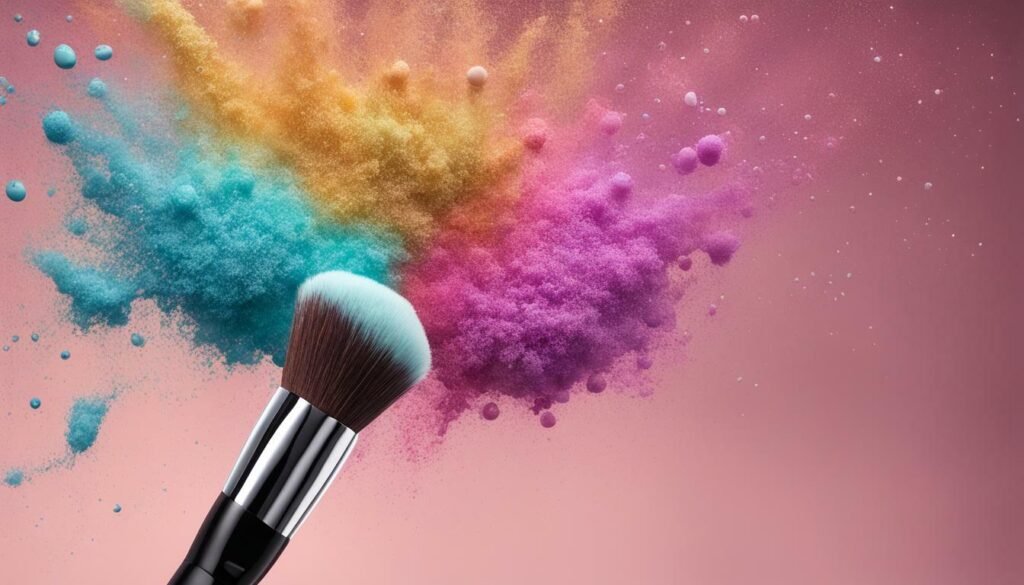
The Science of Powder Cosmetics: Formulation and Ingredients
At the core of the art of powder cosmetics lies the science of their formulation and ingredients. Manufacturers and formulators conduct extensive research and testing to create products that not only produce desired cosmetic results, but also meet safety and performance standards.
The cosmetic industry has made significant strides in developing advanced formulations and techniques that enhance the efficacy and longevity of powder cosmetics. With recent innovations, powder cosmetics have become more finely milled, resulting in smoother and more natural-looking finishes.
One of the primary ingredients used in powder cosmetics is talc, a naturally occurring mineral that serves as a bulking agent. However, concerns regarding the safety of talc have prompted manufacturers to explore alternative ingredients. Some popular alternatives include mica, silica, and cornstarch.
Another crucial ingredient in powder cosmetics is pigment. Pigments provide color to the cosmetic and can be synthetic or derived from natural sources. The type and quality of pigment used can significantly impact the performance and appearance of the cosmetic.
Finally, additives such as preservatives, emollients, and binders are added to powder cosmetics to improve their texture, consistency, and shelf life. However, manufacturers must be mindful of the safety and allergenic potential of these additives and avoid using harmful substances.
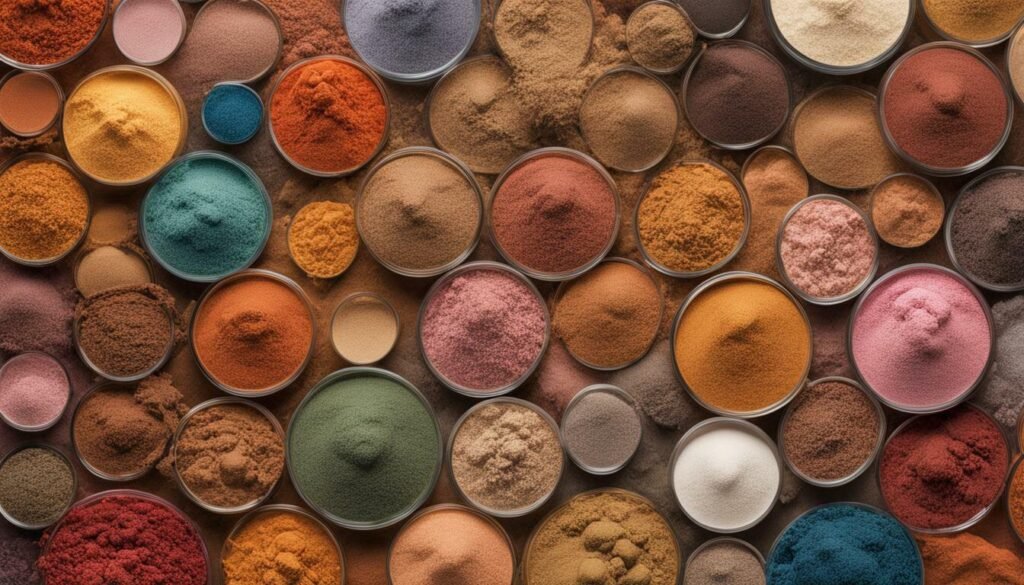
Overall, the science behind powder cosmetics plays an integral role in their development and success. As technology and research continue to progress, we can expect to see further advancements in their formulation and ingredients, offering exciting possibilities for the future of powder cosmetics in the cosmetic industry.
Powder Cosmetics in the Modern Era: Trends and Innovations
In the fast-paced world of beauty, makeup trends are constantly evolving, and powder cosmetics are no exception. From vibrant color schemes to innovative packaging designs, the art of powder cosmetics continues to capture the attention of beauty enthusiasts worldwide. Let’s explore some of the top trends and innovations in the world of powder cosmetics.
Innovative Packaging Designs
Gone are the days of basic plastic compacts and loose powder jars. Today’s powder cosmetics are packaged in sleek, multifunctional designs that are both practical and stylish. For example, many brands have embraced sustainable packaging, using eco-friendly materials such as bamboo and recycled plastic to reduce their environmental impact. Others have incorporated technology into their packaging, such as the LED lit compact from Shiseido (pictured below), which allows for flawless touch-ups in any lighting situation.
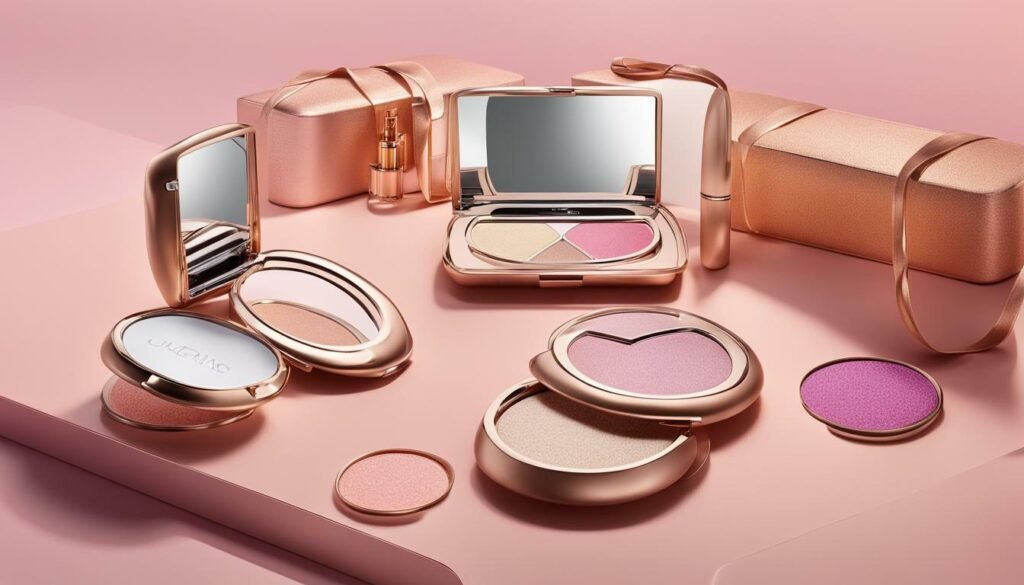
Vibrant Color Palettes
When it comes to powder cosmetics, bold and colorful is the name of the game. From vivid shades of red and orange to electric blues and greens, there is no shortage of vibrant colors to choose from. One trend that has emerged in recent years is the use of contrasting colors to create unique eye-catching looks. For example, using a bright blue eyeshadow paired with a pop of neon yellow in the inner corner of the eye can create a visually stunning effect.
Social Media Influence
Social media has had a significant impact on powder makeup trends. Instagram and TikTok influencers have become powerful forces in the beauty industry, sharing their unique makeup looks and product recommendations with their followers. As a result, many powder cosmetics have gone viral, with consumers eager to try out the latest trends and create their own bold looks.
Overall, the art of powder cosmetics is constantly evolving, with new trends and innovations emerging on a regular basis. Whether you prefer sleek and sustainable packaging, bold and vibrant colors, or following the latest social media beauty influencers, there is something for everyone in the world of powder makeup.
The Future of Powder Cosmetics: Anticipated Trends and Developments
As the beauty industry continues to evolve at a rapid pace, the art of powder cosmetics is also expected to experience significant changes in the coming years. From innovative formulations to sustainable packaging, we explore the anticipated trends and developments shaping the future of powder makeup.
Formulation Advancements
Advancements in technology and research are driving the development of new and improved powder makeup formulations. In the future, we can expect powders with enhanced properties such as longer wear time, increased coverage, and improved pigment dispersion. Companies are also experimenting with new ingredients that offer additional skincare benefits, such as sun protection and anti-aging properties.
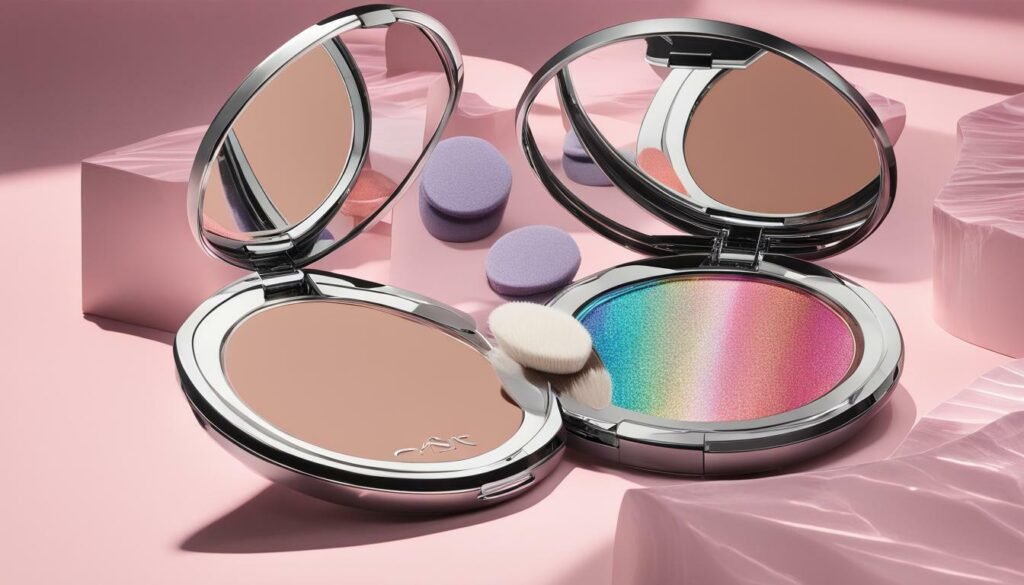
Innovative Packaging
As consumers increasingly demand eco-friendly and sustainable products, cosmetic companies are exploring new ways to package powder cosmetics. We can expect to see a shift towards biodegradable and recyclable packaging materials, such as paper and bamboo. In addition, companies are creating innovative packaging designs that enhance the user experience, such as refillable compacts and customizable palettes.
Rise of Clean Beauty
The clean beauty movement is gaining momentum, and this trend is expected to extend to powder cosmetics. Consumers are increasingly seeking out products that are free from harmful chemicals and are produced using sustainable and ethical practices. As a result, we can expect to see more powder makeup brands adopting clean and natural ingredients, and transparent labeling practices that meet consumer demand for transparency and authenticity.
Digital Influences
The beauty industry is increasingly being shaped by digital influences, and this trend is set to continue into the future. Social media platforms such as Instagram and TikTok have given rise to new makeup trends and have created a new generation of beauty influencers. As a result, we can expect to see powder cosmetics marketed in new and innovative ways, with digital advertising campaigns and influencer collaborations becoming the norm.
As we move into the future, the art of powder cosmetics will continue to evolve and adapt to changing consumer preferences and beauty industry trends. By staying abreast of these future developments, we can ensure that our powder makeup skills remain relevant and cutting-edge.
Powder Cosmetics in the Beauty Routine: Tips and Recommendations
Now that we’ve explored the history, artistry, science, and future trends of powder cosmetics, it’s time to talk about how to incorporate them into your daily beauty routine. Whether you’re a makeup novice or a pro, there are several tips and recommendations that can help you achieve the desired look with powder cosmetics.
Choose the Right Products
When it comes to powder cosmetics, there is a wide range of products available on the market, including pressed powders, loose powders, finishing powders, and setting powders. It’s essential to choose the right products based on your skin type, concerns, and occasion.
If you have oily skin, for instance, you may want to opt for a mattifying powder that can control shine and minimize pores. If you have dry skin, a hydrating powder can add a subtle glow and prevent flakiness. For a special event or a photoshoot, a setting powder can lock in your makeup and ensure it lasts longer.
Another factor to consider is the color of the powder. Make sure to choose a shade that matches your skin tone or complements it. Test the powder on your jawline or neck to ensure a seamless blend and avoid a “cakey” or ashy appearance.
Prep Your Skin
Before applying powder cosmetics, it’s crucial to prepare your skin adequately. Start with a clean and moisturized face, free of any dirt, oil, or makeup residue. You can use micellar water, a gentle cleanser, or a toner to remove impurities and balance your skin’s pH level.
Then, apply a primer that can create a smooth and even canvas for the powder. A primer can also fill in pores, fine lines, and wrinkles, and prevent the powder from settling into them. Choose a primer that matches your skin type and the desired finish.
If you have any blemishes, dark circles, or redness, conceal them with a concealer before applying the powder. Use a shade that matches your skin tone or a color-correcting one that neutralizes the imperfection.
Apply with the Right Technique
The application technique is crucial to achieve the desired effect with powder cosmetics. Depending on the product and the look you want to achieve, you can use different tools and methods.
For instance, for a sheer and natural finish, a fluffy brush can be ideal for applying loose powder. Use a circular motion and start from the center of the face, moving outward. For a more precise and intense application, a denser brush can be suitable. Use a tapping motion and build the coverage gradually.
If you want to apply powder on specific areas, such as the under-eye area or the T-zone, use a smaller brush or a sponge. Use a pressing motion and avoid dragging the powder, as it can disrupt the makeup underneath.
Finesse and Finish
Once you’ve applied the powder, it’s time to finesse and finish the look. Use a clean brush or a sponge to blend any harsh lines or excess powder. You can also use a setting spray that can lock in the makeup and add a natural glow.
If you want to contour or highlight your features, you can use powder cosmetics for that too. Choose a shade that is slightly darker or lighter than your skin tone and apply it with a brush or a sponge. Blend well and use a setting spray to ensure longevity.
Incorporating powder cosmetics into your beauty routine can be a game-changer. By choosing the right products, prepping your skin, applying with the right technique, and finishing with finesse, you can achieve a flawless and long-lasting makeup look.
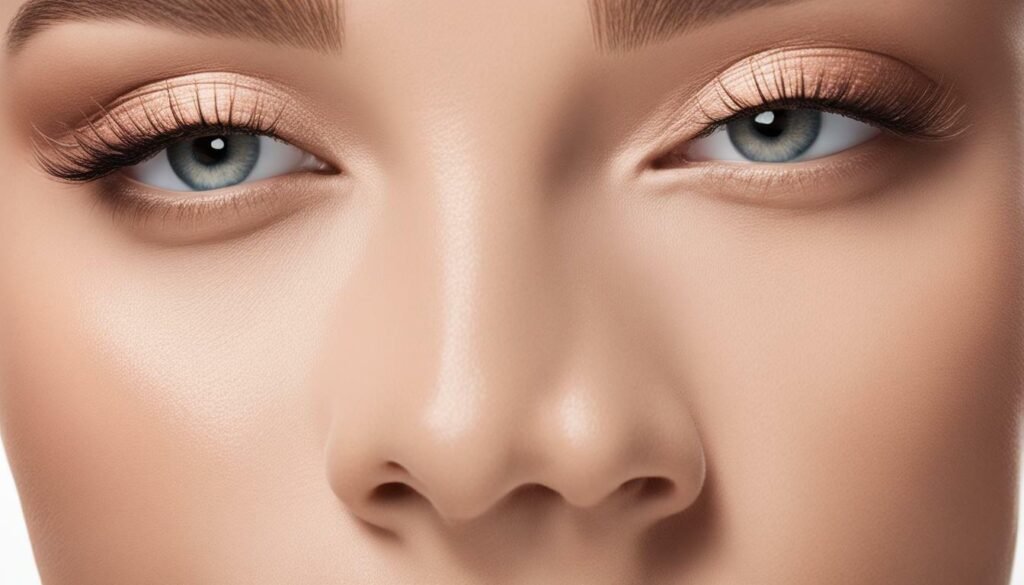
The Impact of Powder Cosmetics: Cultural and Societal Perspectives
Looking back at the history of powder cosmetics, we can see how it has shaped cultural and societal perspectives regarding beauty. From ancient times to the present day, powder makeup has been used to enhance features, create illusions, and express oneself. The cosmetic industry has also played a significant role in influencing beauty standards and trends.
Throughout history, beauty standards have been shaped by cultural and societal norms. In ancient times, a pale complexion was considered a sign of wealth and status. Women used lead-based powder to achieve this look, despite its toxic effects. In the 1900s, the rise of Hollywood glamour popularized red lips and perfectly arched eyebrows. Powder makeup played a crucial role in achieving these looks, and women all over the world followed suit.
Today, the impact of powder cosmetics extends beyond beauty standards. It has become a tool for self-expression and empowerment. From bold and theatrical stage makeup to subtle and natural everyday looks, powder makeup allows individuals to create their own unique styles and identities.
“Makeup is not a mask that covers up your beauty; it’s a weapon that helps you express who you are from the inside.”
Social media and influencers have also played a significant role in shaping cultural and societal perspectives of beauty. Instagram, for example, has popularized specific makeup trends and styles, often involving powder cosmetics. Influencers have become powerful voices in the beauty industry, promoting diversity, inclusivity, and self-love.
Ultimately, powder cosmetics have left a lasting impact on our culture and society. As beauty standards and trends continue to evolve, we can expect powder makeup to remain a crucial tool in the art of beauty.
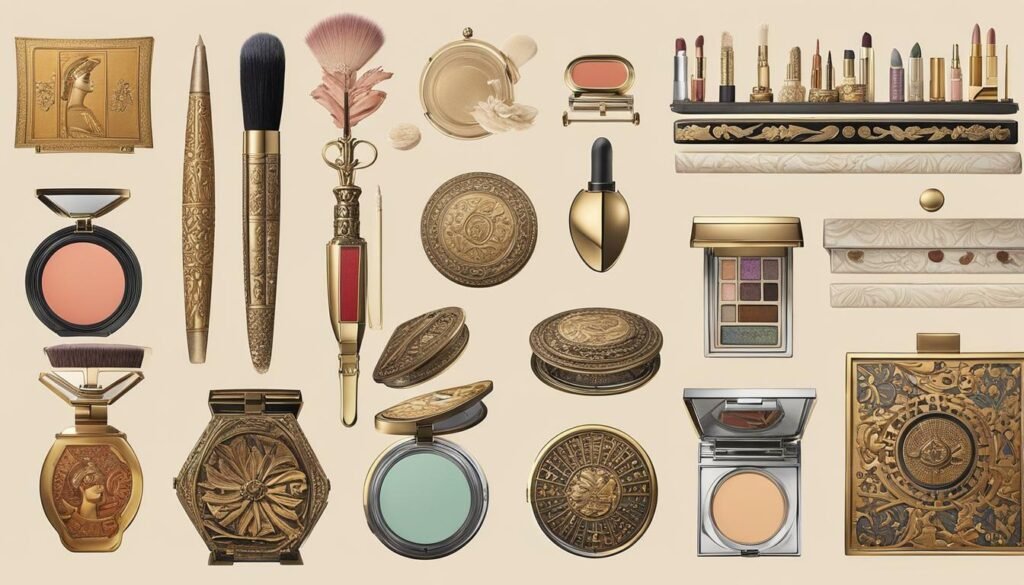
The Conclusion: Understanding the Art of Powder Cosmetics and Future Trends in the Beauty Industry
Throughout this article, we have explored the artistry, history, science, and innovations behind powder cosmetics. We have discussed the techniques and application methods used by makeup artists, the key ingredients in powder makeup, and emerging trends in the beauty industry.
As we move into the future, we anticipate continued advancements in formulation, packaging, and sustainability in the powder cosmetics market. The influence of social media and evolving beauty standards will undoubtedly shape the industry, but we believe that the enduring appeal and artistry behind powder makeup will remain.
When it comes to incorporating powder cosmetics into your daily beauty routine, we recommend experimenting with different techniques to find what works best for your skin type and preferences. Don’t be afraid to try new colors and products, but always keep in mind the importance of using quality ingredients and properly storing and caring for your makeup.
Lastly, we want to emphasize the impact that powder cosmetics have had on cultural and societal norms throughout history. From ancient civilizations to modern-day trends, powder makeup has always played a significant role in promoting self-expression and empowering individuals to feel confident and beautiful. We believe that this enduring legacy will continue to inspire and influence the beauty industry for years to come.
FAQ
Q: What is the history of powder cosmetics?
A: Powder cosmetics have a rich history dating back to ancient civilizations. They have been used for centuries in various cultures for beautification purposes.
Q: How have powder cosmetics evolved over time?
A: Powder cosmetics have evolved significantly, from traditional formulations to modern-day innovations. They have adapted to changing beauty trends and advancements in technology.
Q: What are some popular application techniques for powder cosmetics?
A: Makeup artists utilize various techniques, such as using brushes or sponges, to apply powder cosmetics. The right technique can achieve different desired effects and finishes.
Q: What are some key ingredients found in powder cosmetics?
A: Common ingredients in powder cosmetics include talc, mica, silica, and pigments. These ingredients contribute to the texture, color, and overall performance of the products.
Q: What are some current trends and innovations in powder cosmetics?
A: Current trends include natural-looking finishes, multi-purpose products, and sustainable packaging. Innovations such as long-wearing formulas and unique color palettes are also prevalent.
Q: What can we expect in the future of powder cosmetics?
A: The future of powder cosmetics may involve advancements in formulation, packaging, and sustainability. Consumer preferences and evolving beauty standards will play a significant role in shaping future developments.
Q: What are some tips for incorporating powder cosmetics into a beauty routine?
A: It’s essential to choose the right products for your skin type and occasion. Use appropriate application techniques, such as blending and setting, and consider factors like weather conditions and desired longevity.
Q: How have powder cosmetics impacted cultural and societal norms?
A: Powder cosmetics have influenced beauty standards over time, reflecting societal ideals. They have also played a role in promoting self-expression and empowering individuals to enhance their features.

